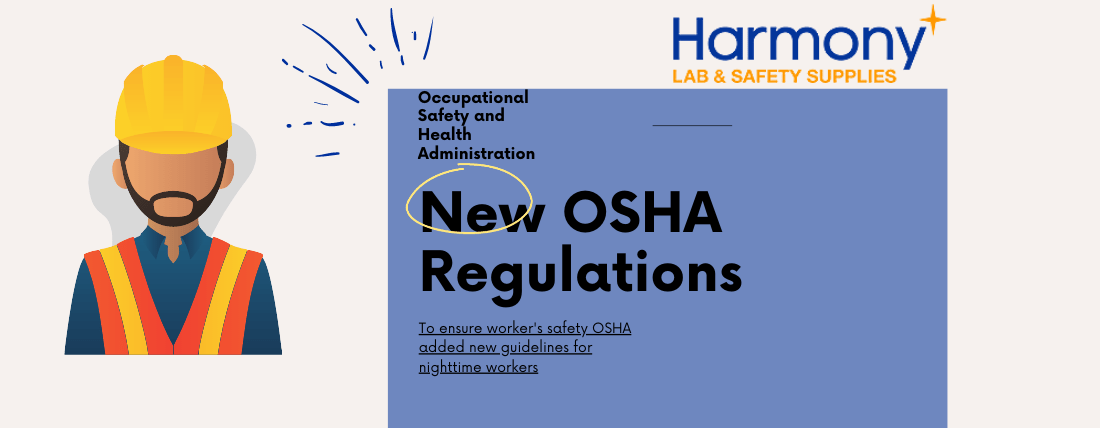High-visibility clothing (Hi-Vis) in the field of occupational safety is paramount. The Occupational Safety and Health Administration (OSHA) took a decisive step in its new standards. Hi-Vis gear is now standard for a whole new class of employees. Workers and employers will benefit from the new normal.
Which OSHA Hi Vis Class Is Right For You?
Safety standards depend on the type of job and conditions. As mentioned above, weather can change the requirement. For example, rainy conditions require more visibility than daytime sun. OSHA’s standards determine what is an acceptable degree of risk for workers.
- Class 1 – Worn when not exposed to high-risk conditions. In many cases, an orange T-shirt is more than sufficient.
- Class 2 – Worn during inclement weather conditions and industrial settings. Many industrial workers are covered in Class 2 garments. Workers that divert attention from oncoming traffic are required to wear class 2 garments.
Inclement weather may necessitate a class 3 garment.
- Class 3 – Class 3 protects workers who work within imminent danger (e.g., oncoming traffic). Although the specific garment will depend on the weather, all class 3 apparel provides visibility of up to 1280 feet (390 meters).
Hi-Vis Personal Protective Equipment (PPE) has higher reflective properties for maximum visibility. The idea is that workers who put on the clothing can be clearly seen from a distance.
It is common to see workers at airports and other high-risk environments wear this type of clothing because it helps people see you sooner and faster, even under low light conditions. For example, airport workers put on yellow vests regardless of conditions.
⭐ STAFF PICK
Portwest UH443 Class 3 Hi-Vis Contrast Rain Jacket
Trusted by professionals for high-visibility, weather protection, and all-day comfort. ANSI Class 3 certified. Durable construction with a striking contrast design.
★★★★★ (Customer Rated: 5.0)
New OSHA Standard as of July 1, 2020
“By the postulations of these standards as enforced by the California Division of Occupational Safety and Health (Cal/OSHA), and effective from July 1, 2020, agricultural employees can now enjoy improved visibility between sunset and sunrise.”
The new agricultural safety standards also empowered supervisors to conduct safety meetings at the start of every shift. During this time, the supervisors will make clear the high-traffic areas and provide additional details of their surroundings to better inform and strategize for everyone’s safety.
Who wears high-visibility clothing?
Today, High-Visibility Clothing isn’t all that restricted to certain industries or to select classes of workers. Instead, you stand a higher chance of wearing one if you work in places or work zones where hazards are prone. Because of the new mandate, OSHA hi-vis is now standard for a new class of workers.
Ideally, workers in industrial and high-risk settings must wear Hi Vis PPE. For example, a worker handling food would wear the proper food-handling gloves. Here are the major industries where High-Visibility Clothing is a must:
- Construction sites
- Emergency and first responders
- Road workers
- Railways
- Crossing guards
- Firemen
- Garbage and refuse workers
- Toll booth operators
- Shopping cart retrievers
- Airports
- Tow truck drivers
- Warehouse employees policemen
- Utility workers
- Heavy equipment operators and
- Shipyard dock workers
Besides, there are many other industries that OSHA has yet to require hi-vis. However, because the standards are situational, the above list is not comprehensive. For example, if a worker diverts attention from traffic, they must wear Class 2 Garments regardless of their profession. If conditions turn rainy, that worker must wear Class 3 garments.
Global Standards for High-Visibility Clothing
ANSI/ISEA – ANSI published this standard for High-Visibility Clothing under the 107 Standard. The publication was done in 1999. The standard developer of the International Safety Equipment Association (ISEA) later made important revisions in 2004, 2010, and 2015.
Part of the revisions was the introduction of the 207 Standard that allowed shorter designs for equipment belt access. It also includes badge holders, convenient garment removal via the 5-point breakaway design, and panels detailing the wearer as an emergency responder.
AS/NZS 4602 – This standard is exclusive to workers in Australia.
RIS-3279-TOM – By the specifications of the standard published by the Rail Safety and Standards Board, all railways in the United Kingdom must use the fluorescent-orange (Standard RIS-3279-TOM) to provide High-Visibility garments to railway workers.


